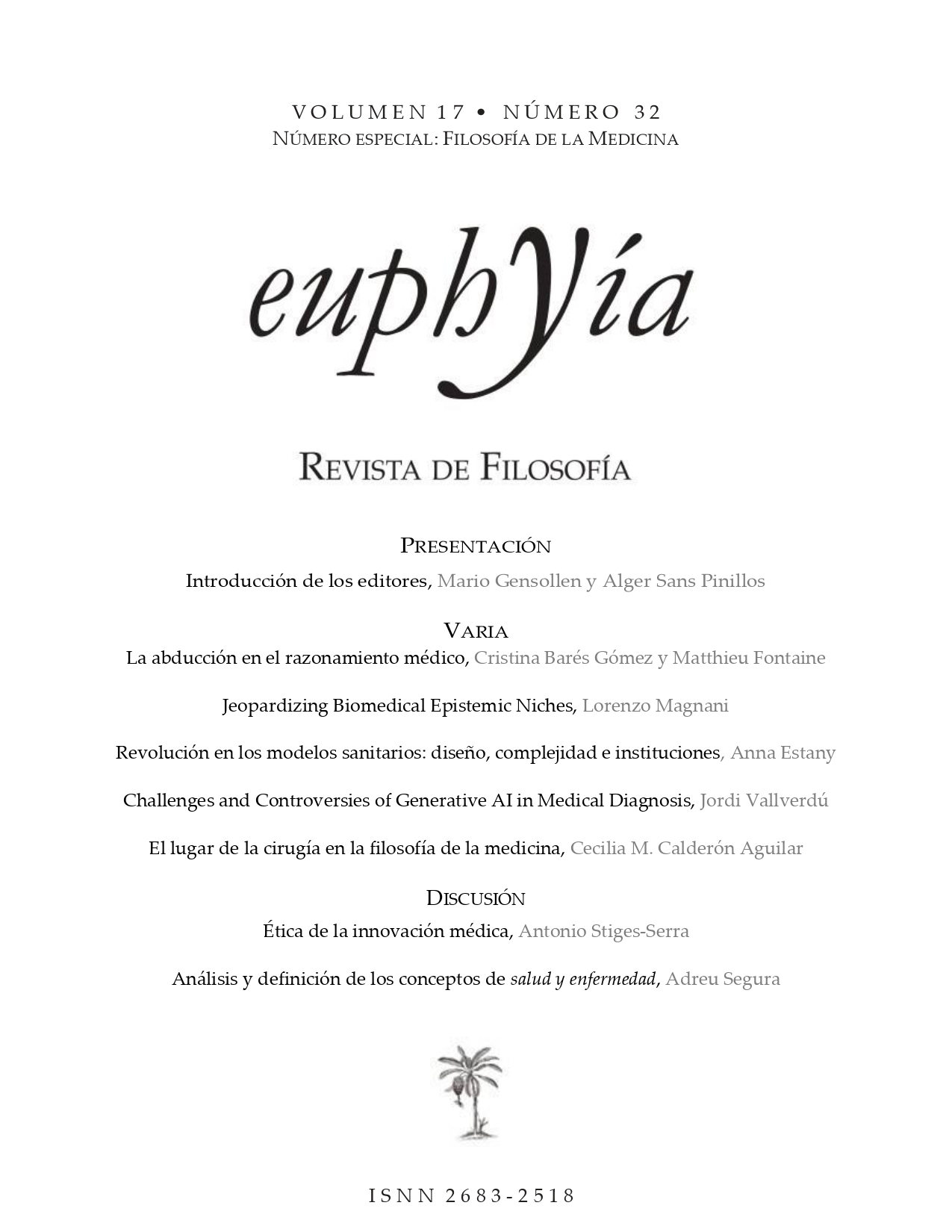Abduction in medical reasoning
DOI:
https://doi.org/10.33064/32euph4951Abstract
When approaching medical reasoning, we must consider not only clinical reasoning but also the physician’s reasoning within the realm of biomedical research. Furthermore, clinical reasoning involves not only diagnosis but also therapy, monitoring, and broader aspects of medical research as fundamental processes. In all these cases, there are inferential frameworks that move from the introduction of abductive hypotheses to deductive prediction of consequences and inductive verification through empirical evidence. However, these reasoning schemes do not always follow this order; sometimes, abductions are followed by other abductions. In this paper, we propose an analysis of medical reasoning based on Gabbay and Woods’ abduction model and Magnani’s Select and Test model to account for the use of abductive hypotheses. We conclude with a discussion of the introduction of hypotheses in relation to the debate about statistical-probabilistic and mechanistic evidence in biomedical sciences, as advocated by Russo and Williamson regarding their complementarity. We differentiate ourselves from them by considering mechanisms as abductive hypotheses that serve to guide experimentation.
Downloads
Downloads
Published
How to Cite
Issue
Section
Categories
License

This work is licensed under a Creative Commons Attribution-NonCommercial-NoDerivatives 4.0 International License.

Este obra está bajo una licencia de Creative Commons Reconocimiento-NoComercial-SinObraDerivada 4.0 Internacional.












